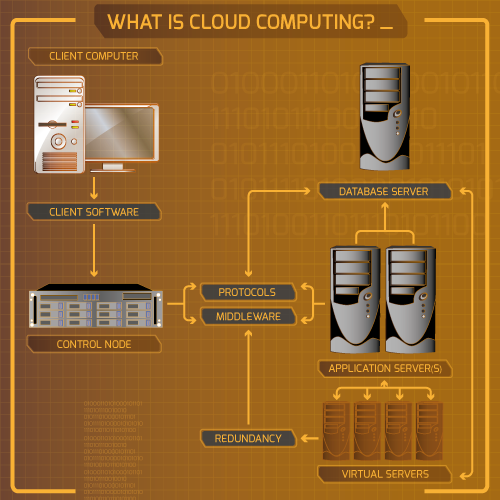
Image by Connetu
Few sectors have been harder hit by the sluggish UK economy than the Charity sector. The Charity Forecast Report published by the NCVO (National Council for Voluntary Organisations) in May 2013, revealed 83% of charity leaders believe that economic conditions over the next 12 months will remain negative.
At a time when charity’s funding is increasingly stretched, it is surprising to learn that only 37% of charities take advantage of the cost efficiencies provided by cloud computing – an internet-based management tool that enables the shared resources of a business to be accessed on demand.
Why Have So Few Charities Adopted the Cloud?
60% of respondents to a recent survey undertaken by the Charity Technology Trust cited a lack of knowledge as the biggest barrier to adopting a cloud IT service.
Talk of ‘the cloud’ can be intimidating for owners of business. Even many people who work within the IT industry would be hard pushed to describe what cloud computing is in a single sentence. It is easy then to imagine how daunting it might sound to the owner of a small charity enterprise, many of whom do not have access to specialist IT support or knowledge.
Similarly, training is often cited as a further roadblock to digital adoption. There is little money allocated for training and with many charities reliant on volunteers for staffing, time is also at a premium.
Why Move To The Cloud Then?
In October 2009, a campaign by Action for Children was highlighted on Stephen Fry’s Twitter feed and thus seen by the best part of five million people who followed the QI presenter at that point. The tweet contained a link to the charity’s website, which at that point was being hosted on a shared server alongside other charities.
An image of the website was taken and moved onto its own server to cope with the expected surge in traffic which lasted for nearly a week during which time, updates to the site could not be applied. With 80 people dedicated to updating the website content, being unable to access it for five days had wide financial implications.
Although Action for Children now use a cloud provider for their operations, a move largely prompted by this activity. However, if their website was already being hosted in the cloud, they would have simply been temporarily scale up their available space thereby maximising exposure and minimising down time.
Additional Benefits to Cloud Computing
Cloud computing offers many benefits for charities. The majority of solutions providers are very user friendly, and so long as they are connected to the web, then staff and volunteers can access databases or other vital information no matter where they are.
This can help bring down overheads by reducing the time staff need to be ‘on site’ and enabling them to use their time for more productive pursuits and also removing the need for expensive IT maintenance and data back-ups. This is all done remotely as part of the user agreement between provider and user.
Social networking sites such as Twitter and Facebook are another great way of bringing more people into contact with your charity. Not only are they great cloud based tools on their own, but they can easily be connected with your main website to make sure each and every update and piece of news reaches the widest possible audience.
Stronger Focus on Charities
The good news is that many cloud providers have identified the value they can bring to the charity sector. They are actively targeting voluntary organisations with a focused and coherent message, with the aim of making the model illustrated above the norm throughout the third sector.
Have you got any experience of cloud computing within charity sector? Share your comments below.
